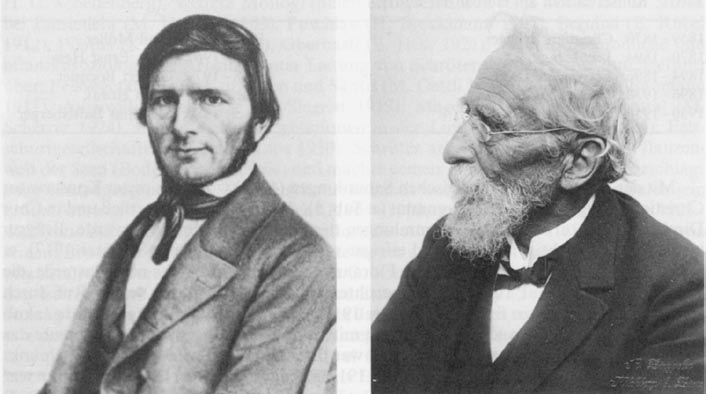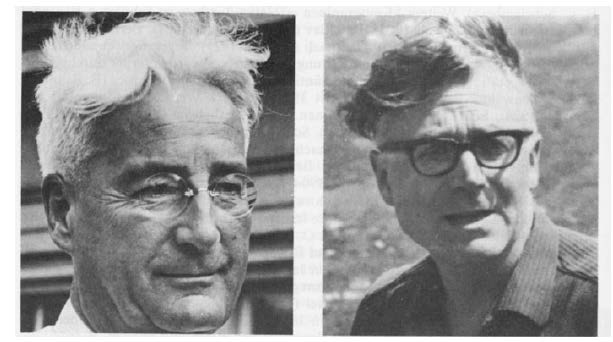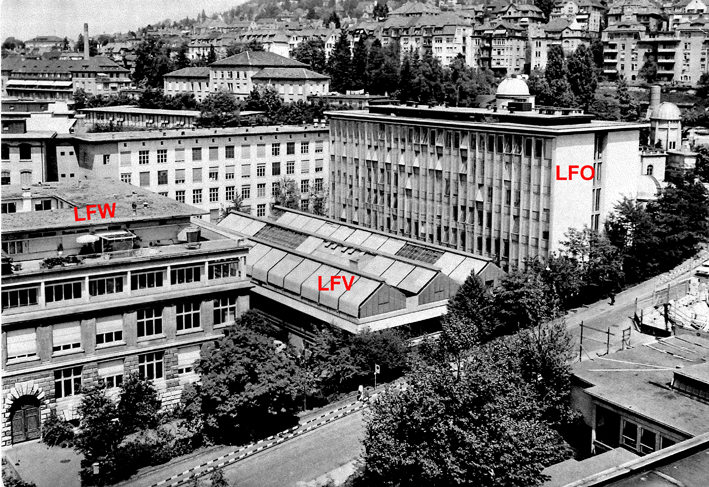History (English summary)
The Development of Botany at ETH Zurich
E. Landolt: DownloadBotanica Helvetica 100, 353-374, 1990 (PDF, 2.1 MB)vertical_align_bottom
The extracted text relevant for plant pathology was slightly modified and translated by G. Boller, U. Rosenberger and G. Défago in 2014. B.A. McDonald lightly edited their English translation.
In the founding statute of the Swiss Federal Institute of Technology (ETH) of February 7, 1854, six departments were foreseen: Architecture, Engineering, Mechanics, Technical Chemistry, Forestry and a department of Pure Sciences that was also responsible for the education of specialized teachers. The Department of Pure Sciences was comprised of three fields: natural sciences, mathematics and humanities subjects including literature and state politics. In the area of natural sciences, the statute included General Botany and Special Botany. This division between General and Special Botany was maintained until 1980. Each of these branches later developed into their own institutes. The Institute for Special Botany, originally (1855) called the Botanical Museum, obtained its later name in 1927. It was disbanded in 1980.
The ETH began in 1855 with a total faculty of 32 Professors, including one Professor for General Botany and one Professor for Special Botany. The branches of General and Special Botany had over their first 115 years only 4 leading Professors.
Special Botany was led by Profs. Oswald Heer (1855-1882), Carl Schröter (1884-1926), Ernst Gäumann (1927-1963), and Heinz Kern (1964-1986). Oswald Heer was also responsible for teaching at the University of Zurich where he was the Professor for Botany and Entomology since 1835. In the first semester of the ETH (WS 1855/56) he taught "Prehistoric Plants and Fossil Insects". Initially, ETH lectures on botany were only required for the specialized teachers, forestry engineers and pharmacists. The pharmacists were located in the Department of Technical Chemistry at that time.
The Department for Agriculture was founded in 1870, which brought a significant expansion in teaching. The additional teaching in botany became too burdensome for one Professorship to maintain the teaching at both universities. Since the teaching at ETH of the practical aspects of botany could no longer be accommodated with the needs of the University of Zurich, it was decided to establish separate chairs of botany at each university. This separation was achieved with the appointment of Schröter (1884) at the ETH. In 1884 the Institute of Special Botany was moved to the new building of the Land- und Forstwirtschaft (LFW). During 1914 to 1916 the building was renovated and enlarged and the Herbarium (collections of the Botanical Museum) was then installed in the LFW. The LFW was subjected to several renovations between 1916 and 1993. In 1952 a house for experimental botany was added behind the LFW, with laboratory space and greenhouses. This LFV building was demolished 30 years later and the other facilities were incorporated into the LFW.
Special Botany was represented by Oswald Heer (1809-1883) of Glarus and Zurich at the time the ETHZ was founded (1855). Heer, originally trained as a theologian, decided to become a natural scientist in order to fill his fellow humans with enthusiasm, so that they may, as he said in his inaugural lecture as Privatdozent (university lecturer) in 1834, "recognize in nature God, the almighty and all-knowing". He was already in 1835 a Professor for Botany and Entomology at the University of Zurich and taught at ETH until the spring of 1883. In addition to giving the introductory lectures on special, economic and pharmaceutical botany, he also lectured on plants from prehistoric times and on various subjects in entomology. He also led excursions, which in those days were all done on foot. The conservator Jäggi described a walking excursion starting in Zurich, travelling via Embrach to Rorbas, where the class slept on hay, and walked the next day to Schloss Teufen, and from there over the whole of Irchel to Neftenbach and then back to Zurich. Heer's double Chair (shared between ETH and University of Zurich) was also linked with the management of the Botanical Gardens.
The many activities of Heer included entomological work, efforts to improve agriculture (including research to fight the Maybug plague caused by Melolontha melolontha), and activities revolving around the social conditions associated with agriculture. He was co-founder of the School for Agriculture Strickhof and also led botanical and paleontological investigations. He was also politically active and was for 18 years a member of the Zurich cantonal council.
Heer possessed a large collection of insects and a wonderful collection of prehistoric plants (as fossils in rocks) and also organized a herbarium of modern plants that in 1859 became the original founding stock of the botanical collection of the ETH.
In spite of his great success, Heer remained a very kind and affable person. He wrote delightful manuscripts including "Flowers plucked for happy botanists", in which he penned poems about individual plants set to well-known melodies of student songs. The poetic verses were a mixture of humor and pathos, and were surely sung by the students during their excursions. Schröter (1917) characterized Heer with the following words: "Heer was a true son of the Alps: his whole being had the unmistakable stamp of a great character. He was as untiring in his working energy as an ever-running mountain stream, solid as a rock in his principles, but on the other hand was full of friendly cheer, like the flowering Alpine grass, and pure and spotless in his ways like the dazzling glacier. The Alpine nature has developed in him a richness of fantasy which has radiantly framed his research life; it has given rich nourishment to his enthusiastic love of fatherland and has strengthened his deep religious belief, which was the basis of his character."
For the study of cryptogams (non-seed bearing plants like algae and ferns, eventually including fungi), especially fungi, lectures were given between 1876 to 1884 by Privatdozent (Heinrich) Georg Winter (1848-1887) from Leipzig, Germany. He was also employed at the University of Zurich and dealt with, among other subjects, the fungi in the second edition of Rabenhorsts Kryptogamenflora.
Franz Beneke (*1857) from Berlin lectured at ETH from 1885 to 1886 as a Privatdozent in Agricultural Botany.
As the successor to Heer, Carl Schröter (1855-1939) from Karlsruhe and Zurich, was elected Professor in 1884 and held the Chair of Special Botany until 1926. Schröter was a student of Heer and was already a Privatdozent at ETH in 1878, before obtaining the Doctor title (PhD) in 1880. Following in the footsteps of Heer, he worked first in the field of plant paleontology. Later he conducted research on moors, for many years in collaboration with Friedrich Gottlieb Stehler (1852-1935; Privatdozent for Technical Agricultural Botany at ETH from 1876 to 1901) and worked also on problems of applied agricultural botany. Schröter was an inspiring and thrilling lecturer and excursion leader and made large contributions towards making botany a popular subject. In later years he made many excursions around the world and collected an abundance of material to add to the ETH collections and use as examples in his lectures.
In the Herbarium, Franz von Tavel (1863-1941) from Bern and Vevey (VD) became successor to Jäggi who passed away during his term in office. Von Tavel was Privatdozent at ETH (1892-1896) and dealt primarily with flora, fungi and ferns. He joined the Salvation Army full-time in 1896, but remained attached to Botany.
In 1927 Ernst Gäumann (1893-1963Download. (PDF, 76 KB)vertical_align_bottom) from Tägertschi (BE) was elected as successor to Schröter to the Chair for Special Botany. Gäumann dealt mainly with Mycology and Plant Pathology, so under his leadership the main subject matter of the Institute changed completely. Although vegetation science continued to be studied for a long time by some students of Schröter and the conservators of the herbarium, this field clearly lost importance. Starting from a small botanical museum with little working space, a greatly expanded Institute of Special Botany emerged that included modern laboratories, air-conditioned growth chambers and greenhouses and experimental gardens. This enabled research to be conducted across a variety of botanical disciplines, including: systematic studies and infection tests with parasitic fungi (e.g. downy mildew oomycetes, smuts and rust fungi), tests on the durability of wood (seeking protection against the decay caused by fungi and bacteria), modes of action of metabolites isolated from fungi and bacteria (including wilt toxins and antibiotics) and studies on pathogen immunity and resistance in plants (for example chemical defence compounds later called phytoalexins produced by orchids against root fungi).
A series of studies oriented around physiology and biochemistry were conducted to better understand these topics. These studies were carried out either entirely in the Institute of Special Botany or together with the Institute of Organic Chemistry, e.g. to determine the physiological basis of plant wilting or the origin and chemical nature of the toxins, antibiotics and defence substances produced during pathogen-plant interactions. Long-term collaborators included Steffie Naef-Roth and chemist Walter Keller-Schierlein, Privatdozent and tit. Prof., respectively. A series of published reviews summarizing the knowledge gained during these research efforts made Gäumann and his institute widely known. In 1926 his work "Comparative Morphology of Fungi" was published and his book "Fungi" was published in 1949. In 1959 he published an extensive monograph on the "Rust Fungi of Middle Europe". On the subject of plant pathology, Gäumann published together with his teacher Eduard Fischer from Bern the book "Biology of Plant Inhabiting Parasitic Fungi" in 1929. Gäumann's 1946 textbook "Principles of Plant Infection" was widely distributed and translated into several languages e.g. Chinese and Russian (Downloadsee copies of book covers here (PDF, 9.9 MB)vertical_align_bottom).
Gäumann had a very strong influence on his many students, whom he directed very firmly. He also had a very strong influence on botanical sciences at universities in Switzerland and in the chemical industry. Unforgettable for his former students were the many excursions he led, during which he not only conveyed information and knowledge about botany, but also regarding land and people, culture and industry and commerce. In the evenings he sat together with his students to enjoy singing and wine. From 1932 to 1963 he was Editor of "Report of the Swiss Botanical Society" and of the “Phytopathologische Zeitschrift” (now called the Journal of Phytopathology).
In 1964 Gäumann was succeeded by his student and colleague Heinz Kern (1927-1986) from Bülach (ZH). Kern, a Privatdozent since 1957 and Professor at the institute starting in 1960, worked in the same research fields as Gäumann, so the scientific direction of the institute did not change under his leadership. Working together with his colleagues Geneviève Défago, external pageAPSnetcall_made (*1942, Privatdozent since 1977, Tit. Prof. since 1990, from Val d'Illiez, VS), Ludmilla Sedlar and Cesare Gessler, external pageAPSnetcall_made, external pageWikipediacall_made (*1949, from Wädenswil), Kern investigated the physiology of host-parasite interactions as well as the biological control of weeds and soil borne diseases. Between 1964 and 1978, he edited the "Report of the Swiss Botanical Society” and the “Journal of Phytopathology” as Gäumann's successor.
Students of Gäumann or of Gäumann and Kern included:
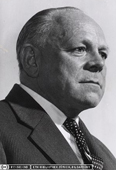
- Otto Jaag (1900-1978) from Beringen (SH), Privatdozent from 1933, Professor from 1945 and from 1957 to 1970 Head of EAWAG. Jaag was a student of Chodat in Geneva and of Jaccard and Gäumann. He worked together with Gäumann on plant transpiration and wilting diseases. His main interest was in algae and hydrobiology. external pageread more.call_made
- Heinz Ambühl (1929-2007), from Dürnten (ZH), made his doctorate under Gäumann and Jaag, then dealt with phytoplankton and the biology of lakes and rivers at the EAWAG and became Professor for Hydrobiology at the ETH in 1972. external pageread more.call_made
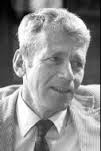
- Leopold Ettlinger (1914-2008), from Zurich, worked with antibiotics and became Professor for Agricultural Bacteriology and Fermentation Biology in 1963; later named Professor for Microbiology. read more.
- Hans Zogg (1916-1996), from Weite-Wartau (SG), was from 1951 to 1981 Privatdozent and tit. Professor from 1966 for Special Plant Pathology. Zogg worked at the Agricultural Research Station in Reckenholz and worked following his retirement in 1981 as an academic guest at the Geobotanical Institute ETH, where he finished his monograph on Uredinales (smut fungi) of Middle Europe.
- Hans Zähner (1929-2008), from Zurich, Privatdozent at ETH from 1959 to 1964 for antibiotics. In 1964 he was elected a Professor in Tübingen (Germany). external pageread more.call_made

- Emil Müller (1920-2008), of Zollikon and Uetikon am See (ZH) worked on the systematics and biology of fungi and in 1953 became the newly established second Conservator for Kryptogamen. Müller's field of work embraced the systematics of ascomycetes, including experimental investigation on the fertility behaviour of fungi and endophytic fungi. He published a "Flora of the Aletschwald Reserve" (1977), various monographs on pyromycetes (1954, 1962, together with A. von Arx, himself a student of Gäumann who later became a Professor in Wageningen, Netherlands) and a pocket book on mycology (1968, together with his student Wolfgang Löffler). He functioned as Privatdozent from 1966, as Professor from 1970 and in 1980 moved to the Microbiological Institute of ETH when the Institute for Special Botany was closed. external pageread morecall_made.

- Ralf Hütter (*1934) of Schönenbuch (BL) and Basel, worked on the systematics of fungi and streptomycetes. He was Privatdozent at the Institute of Special Botany in 1964, became a Professor at the Microbiological Institute in 1967 and was Vice-President for Research at ETHZ starting in 1989.
- Jacob Nüesch (*1932) from St Gallen. Head of Pharmaceutical research in Basel at Ciba Geigy and was elected President of the ETHZ in 1990. Note from BAM: he was also instrumental in hiring Bruce McDonald as the new Prof. of Plant Pathology at ETH in 1998. external pageread morecall_made.
- Hans-Rudolf Hohl (*1933) from St Gallen; received his PhD in 1961 and was elected Professor for General Botany at the University of Zurich in 1969.
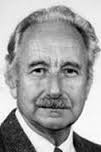
- Theodor Otto Diener was born in Zurich (1921), received his PhD in 1948 and discovered the Viroide in 1971 after he was hired by the Plant Virology Laboratory (Agriculture Research Service of the USDA) at Beltsville (USA). external pageread morecall_made.
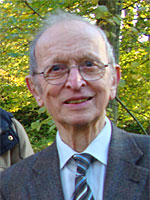
- Elias Landolt, the author of this text (1927–2013) is from Zürich. He became Privatdozent in 1957, Professor for Special Botany in 1964 and was elected as Professor for Geobotany as well as Director of the Geobotanical Institute of the ETHZ in 1966. external pageread morecall_made.
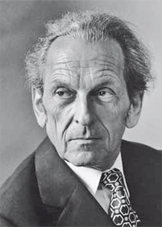
- Hans Hess (1920-2009), from Bern, conducted his PhD on induced resistance of plants against fungi. Became Privatdozent in 1954 and Professor for Systematics of Phanerogams at the ETHZ in 1967. external pageread morecall_made.
(most of the "read more" text is available only in German)
The Chair for Plant Pathology was occupied in 1988 by Martin Stuart Wolfe (*1937) of Leeds (UK), becoming the successor to Kern. The main area of Wolfe's research was on population dynamics and genetics of powdery mildew fungi in cereals as well as other plant pathogens. The aim of his investigations were to make possible an ecologically effective, cost-effective and long-lasting control of plant diseases. (external pageElm Farmcall_made)
Note from BAM: Bruce McDonald, ETHZ, external pageAPSnetcall_made, (*1960) of Newport Beach, California (USA) became successor to Wolfe as Professor of Plant Pathology in 1998.

